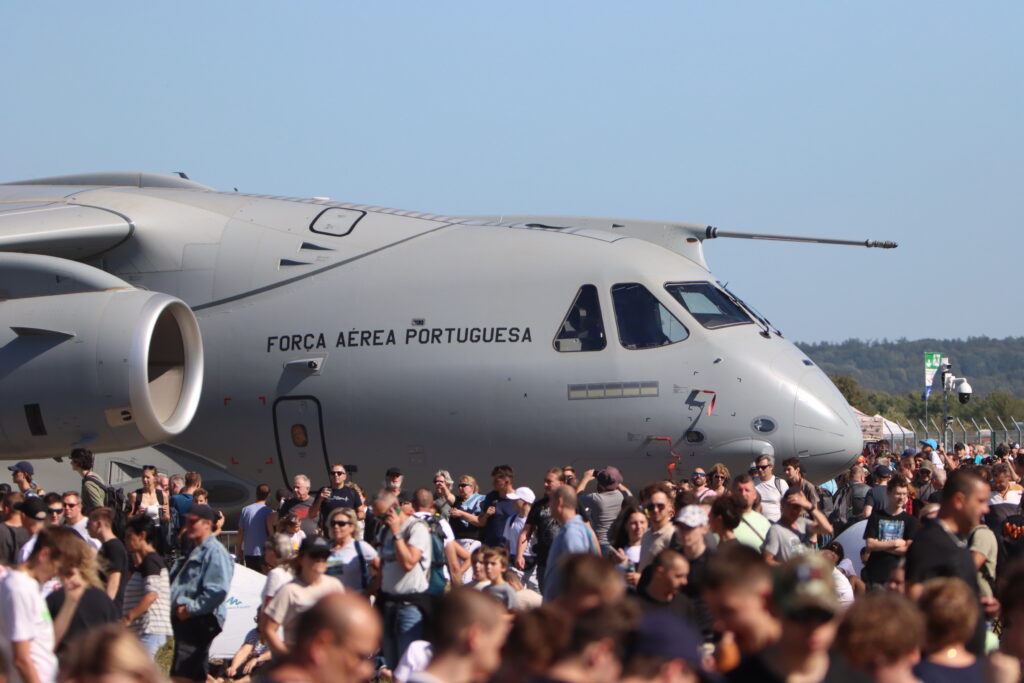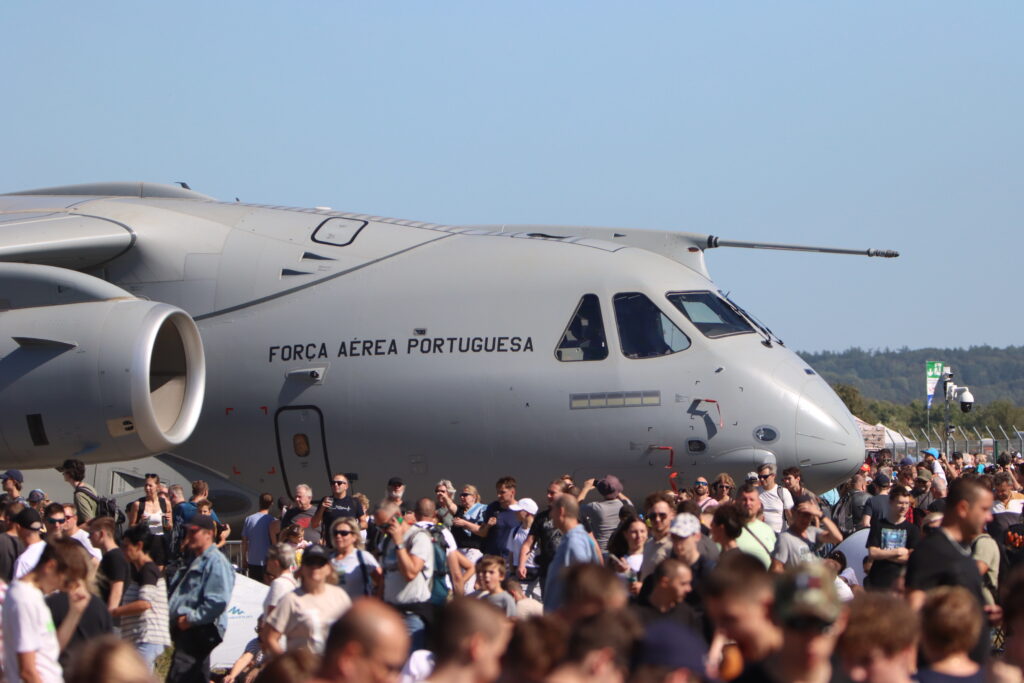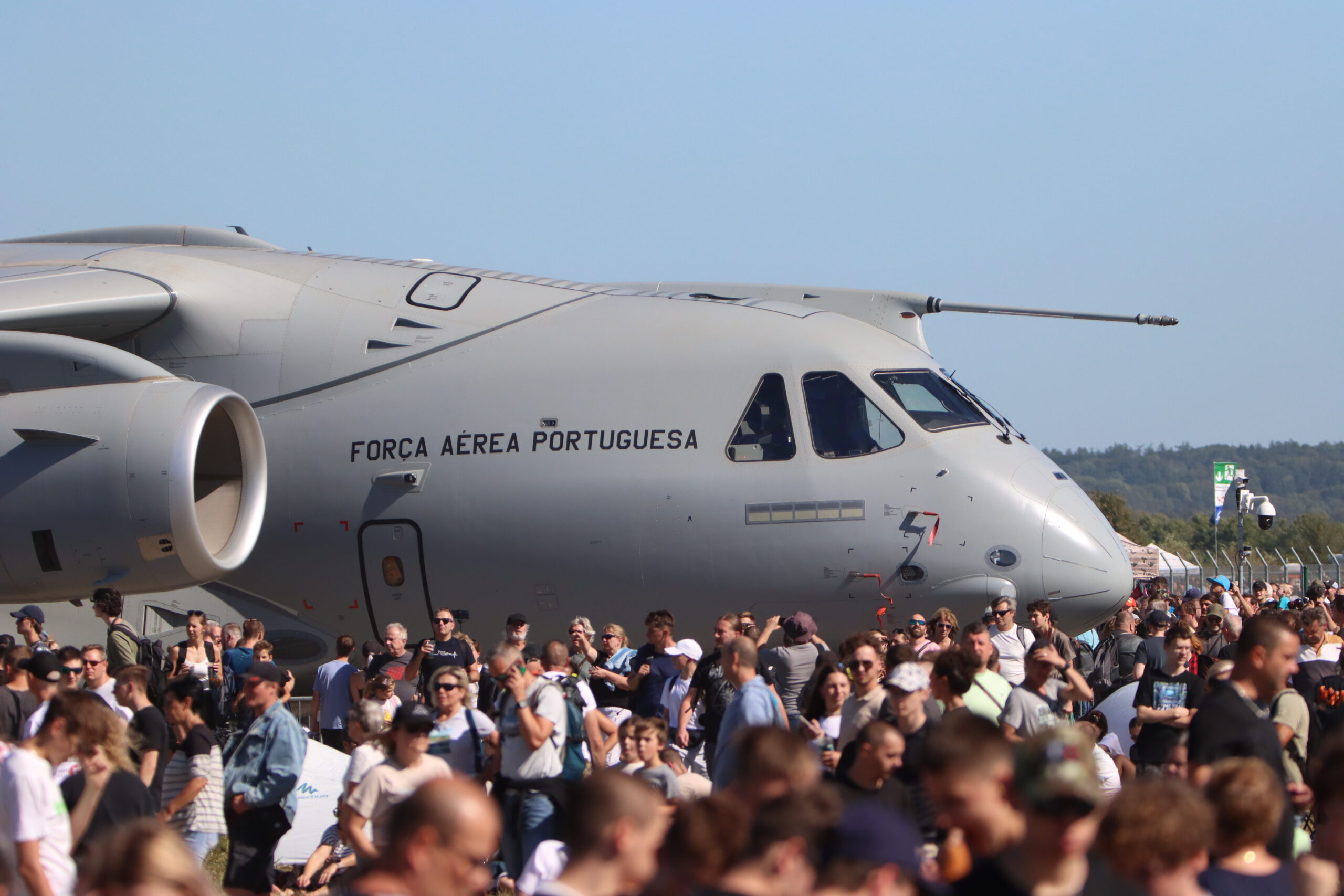Ostrawa 2025-09-29
Embraer C-390 Millennium.
The Embraer C-390 Millennium is a successful Brazilian transport aircraft developed by Embraer. The aircraft has entered service with several countries, and others are considering purchasing it.


The aircraft project, known as the KC-390, was officially launched in 2009, when Embraer received a contract for the development and construction of the first two prototypes. The goal was to create a modern transport aircraft that would replace, among others, the older Hercules C-130 aircraft in service with the Brazilian Air Force. At that time, Embraer was already delivering successful turbojet-powered commercial and business aircraft to its customers. The aircraft’s design included a new fuselage, wing, and cockpit, and the option of two turbofan engines (IAE V2500), which were intended to provide higher speed and better performance than traditional turboprop engines.
The first prototype, designated PT-ZNF, was unveiled on October 21, 2014. The aircraft first flew on February 3, 2015. The prototype logged over 100 flight hours before the second prototype took off. The second prototype (PT-ZNJ) was completed in March 2016, and its first flight took place on April 28, 2016. The first aircraft for the Brazilian Army were scheduled for delivery in 2018. However, as is often the case with such an innovative design, delays occurred. There were problems with financing and the certification process. The first production aircraft was delivered to Brazil in 2019. In April 2023, Embraer + FAB (Brazilian Air Force) announced that the aircraft had achieved Full Operational Capability (FOC) status, meaning it meets all operational requirements for which it was designed. Currently (2025), Embraer is gradually increasing the production rate of the C-390 aircraft. The plan is to achieve a production rate of 12 aircraft per year.
Portugal is one of the first export users of the C-390 aircraft. The country has ordered several units, with deliveries beginning in 2022-2023. In 2020, Hungary signed a contract for two units, configured with medical capabilities. The first aircraft for Hungary completed its test flight in February 2024. The number of countries using or ordering C-390 aircraft is gradually increasing. For example, the Netherlands and Austria have finalized the purchase of nine aircraft for both countries, with deliveries scheduled to begin in 2027. The list of countries that have purchased or ordered Embraer C-390 Millennium aircraft: Brazil, Portugal, Hungary (2 aircraft), the Netherlands (5 aircraft), Austria (4 aircraft), the Czech Republic (2 aircraft), South Korea (3 aircraft), Sweden (4 aircraft), and Slovakia (3 aircraft).
C-390 Design
The aircraft is a transport aircraft capable of performing various missions; The aircraft is designed for passenger and cargo transport, medevac, rescue, and humanitarian operations, and can also function as an aerial refueling vehicle. The aircraft can operate from temporary and unpaved runways, a significant advantage, especially in countries with vast and underdeveloped terrain.
The aircraft’s layout is a classic, cantilever, low-wing jet monoplane with a T-shaped tailplane and a rear cargo ramp. The cargo hold measures 18.50 m long, 3.45 m wide, and 3.20 m high. The airframe is constructed of steel, aluminum alloys, and composites. Composites are primarily used in the skin. The landing gear is a retractable, three-leg, nose-wheel, two-axle main bogie, adapted for operation from unpaved runways. The landing gear is a retractable, three-leg, nose-wheel, two-axle main bogie, adapted for operation from unpaved runways. The aircraft can carry: two Guarani 6×6 armored vehicles, or a UH-60 Black Hawk helicopter, or seven 463L pallets, or 80 fully equipped soldiers, or 66 parachutists, or 74 wounded on stretchers with medical personnel. The rear loading ramp is hydraulically driven.
The aircraft has a high-wing configuration, meaning the center wing is positioned above the fuselage. This arrangement ensures the cargo hold maintains a perfectly cubic shape. A winch can therefore be mounted under the ceiling. The wing is swept, with a low angle of attack and slight negative lift. The wings are equipped with flaps, slats, and spoilers for good STOL (short-runway takeoff and landing) characteristics. The “T” tailplane is typical of transport aircraft.
The aircraft is equipped with two IAE V2500-E5 turbofan engines. These are the same engines used in the Airbus A-320. The engines produce 2 x 139.40 kN (2 x 27,000 lbf) of thrust. The engines are equipped with thrust reversers. The engines are housed in nacelles suspended under the wings. Two engines are replaced by four, significantly reducing maintenance time and the number of spare parts.
Equipment The glass cockpit is equipped with multifunction LCD displays. The aircraft is equipped with modern navigation systems (GPS/INS), fly-by-wire (digital control), and other systems. The fly-by-wire system is 3-channel, ensuring greater safety and precision maneuvers. The avionics can be integrated with NATO systems (Link-16). The aircraft is equipped with a refueling system. The aircraft can refuel other aircraft and also self-fuel. The aircraft can be equipped with additional systems and devices, such as a self-defense system. This system includes missile warning sensors, flare dispensers, and dipoles. The cabin and cargo hold are adapted for flight with NVG (night vision goggles).
T-T C-390 specifications: Crew: 3 (2 pilots and loadmaster). Payload: up to 26,000 kg (57,320 lb). Length 35.20 m. Wingspan 35.05 m. Height 11.84 m. Takeoff weight 74,400 – 86,999 kg. Maximum speed 988 km/h (533 kt). Cruise speed 870 km/h (Mach 0.80). Operating ceiling 11,000 m (36,000 ft). Range with payload 14,000 kg, 5,820 km. Range with payload 23,000 kg, 2,820 km. Range with payload 26,000 kg, 2,100 km. Ferry range with additional fuel tank 8,500 km. Take-off with normal payload (23,000 kg) approximately 1,524 m. Take-off with payload (16,000 kg) approximately 1,165 m. Landing with payload 26,000 kg approximately 1,000 m.
Written by Karol Placha Hetman

